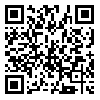Volume 53, Issue 1 (30 1995)
Tehran Univ Med J 1995, 53(1): 36-40 |
Back to browse issues page
Download citation:
BibTeX | RIS | EndNote | Medlars | ProCite | Reference Manager | RefWorks
Send citation to:



BibTeX | RIS | EndNote | Medlars | ProCite | Reference Manager | RefWorks
Send citation to:
Javadian A. Giant papillary conjunctivitis: A study of 700 cases. Tehran Univ Med J 1995; 53 (1) :36-40
URL: http://tumj.tums.ac.ir/article-1-1703-en.html
URL: http://tumj.tums.ac.ir/article-1-1703-en.html
Abstract: (6799 Views)
In view of the rapid expansion of contact lens amongst the users, new dimensions have been added to the domain of ophthalmology: Giant papillay conjunctivitis, a disease caused by different kinds of contact lens, appears weeks or months after they are used, although some patients are struck years later. The predominant symptoms are increased awareness of lenses, ocular itching, blurred vision and excessive lens movement. The predominant signs are the formation of papillae, the presence of excessive mucus, and contact lens coatings. The syndrome occurs mostly with the soft lens and is more intense. Other independent studies show that the rate of prevalence of the disease with soft lenses and hard lenses is 10% and 5% respectively. The study comprised 550 soft lenses and 150 hard lenses. The diagnosis of the disease was based on the symptoms and signs of the disease. Eleven percent of the patients using soft lens and 4% of the patients using hard lens had the disease at some stage. Almost all of the patients were using dirty and low grade lenses. The therapy protocol of the disease consisted of changing the polymer type of the lens and administering cromolyn 4% drop. In cases that the therapy was unsuccessful, a temporary suspension of the lens and administration of cromolyn 4% was recommended before using the new lens.
| Rights and permissions | |
 |
This work is licensed under a Creative Commons Attribution-NonCommercial 4.0 International License. |





